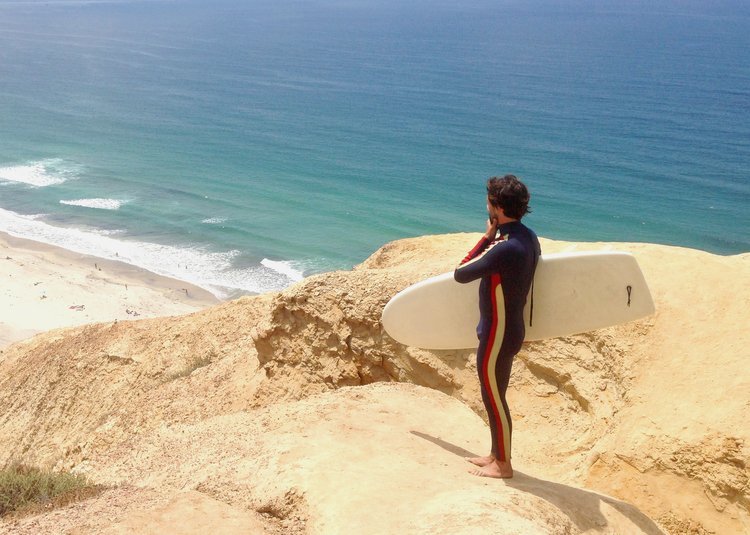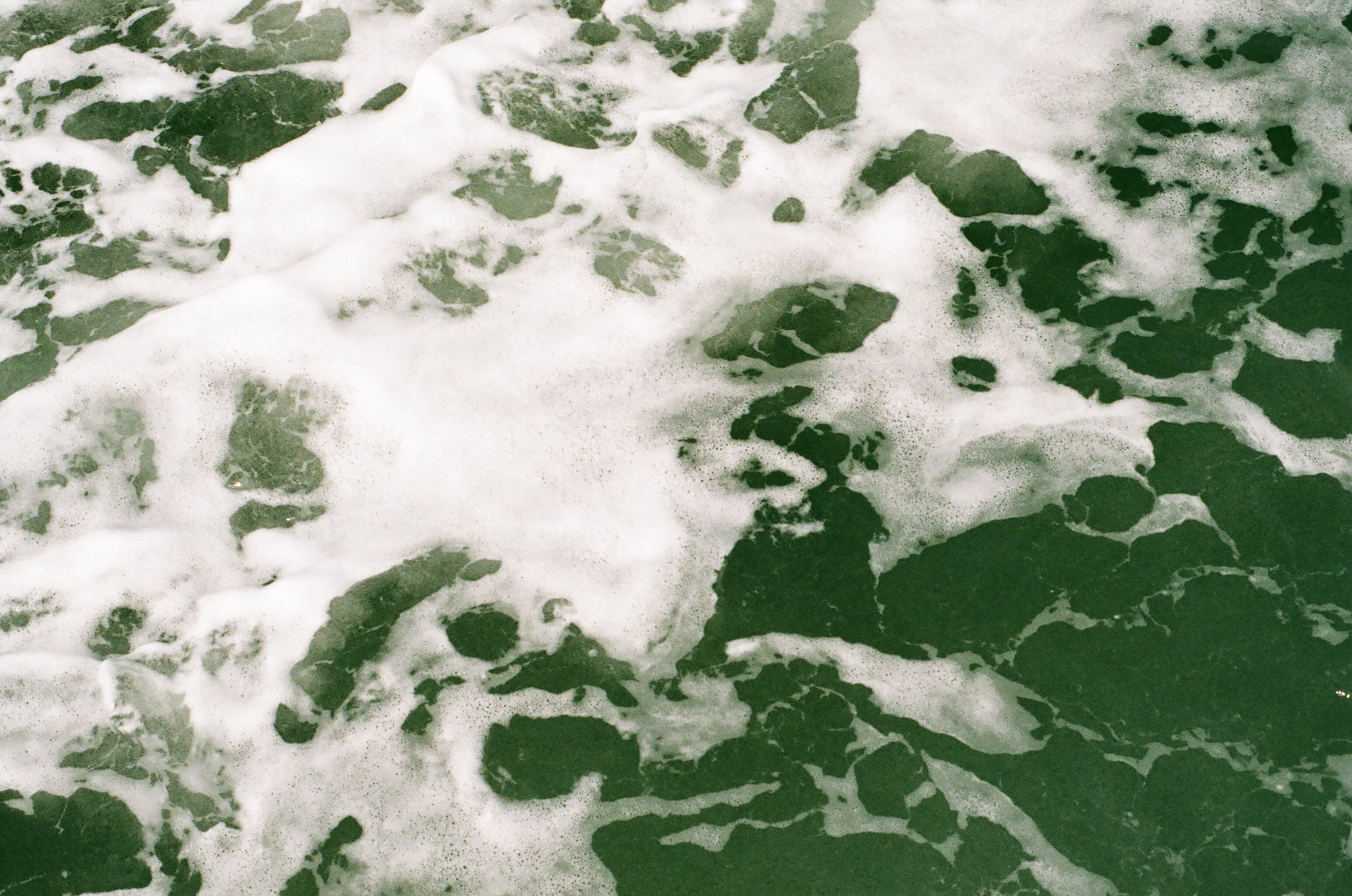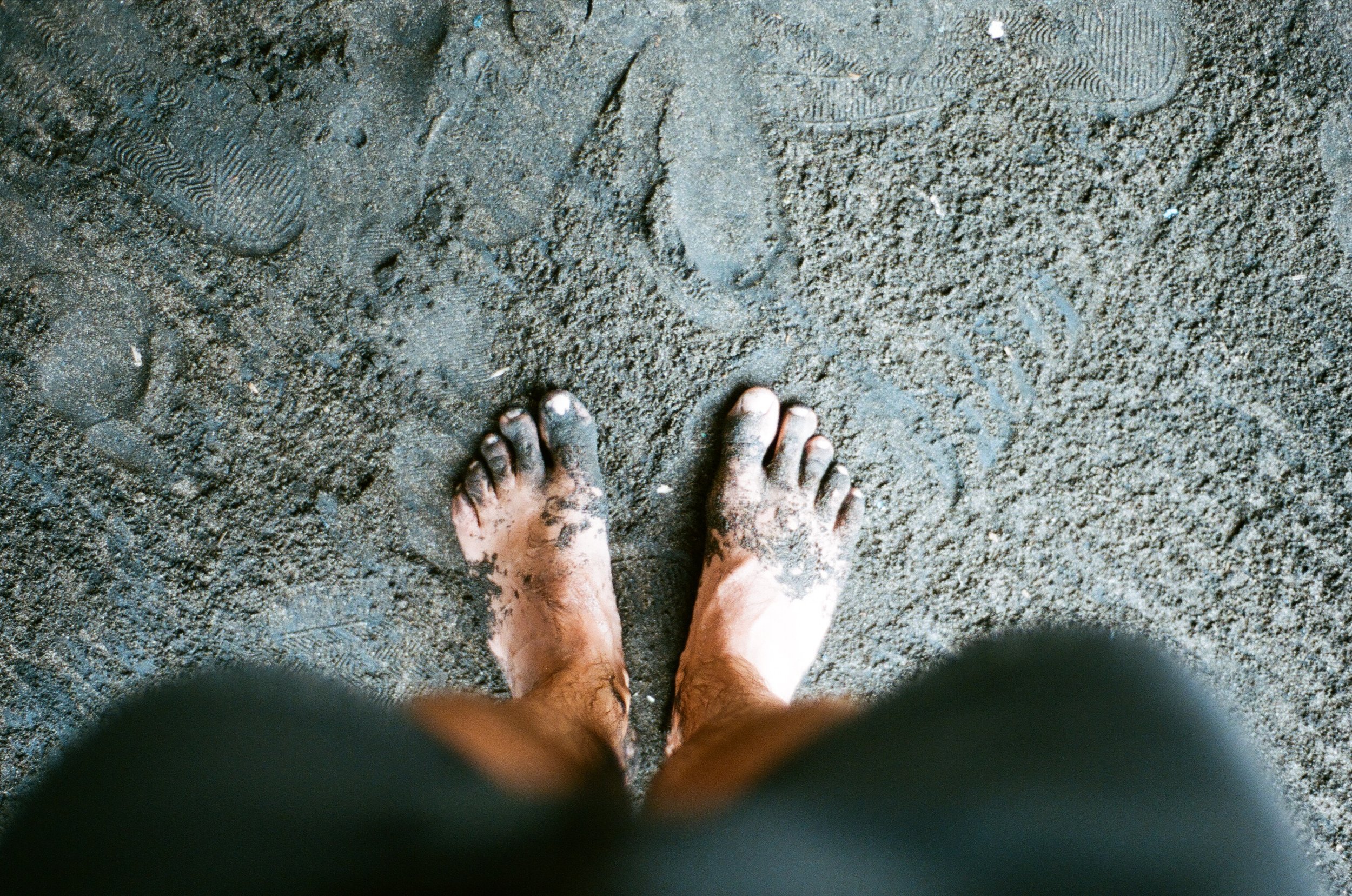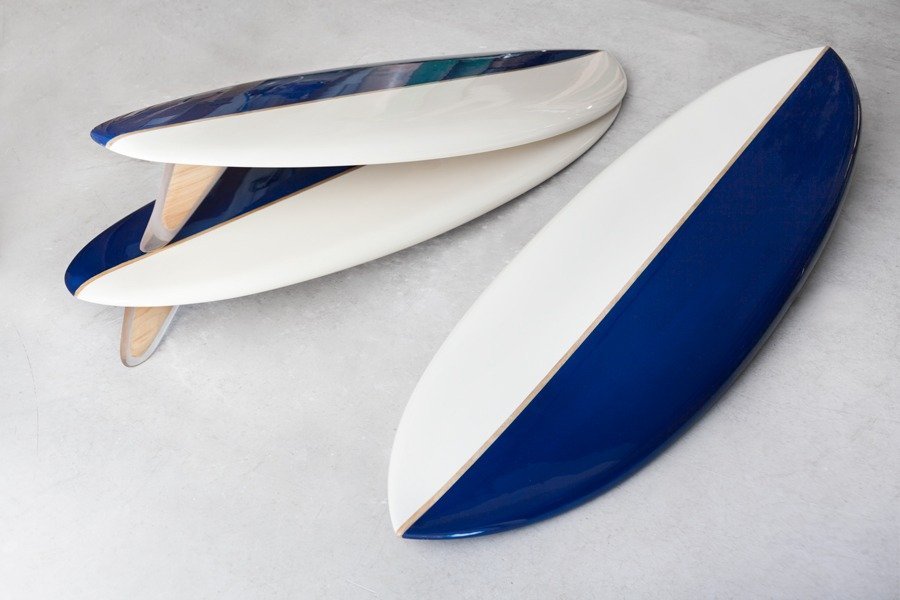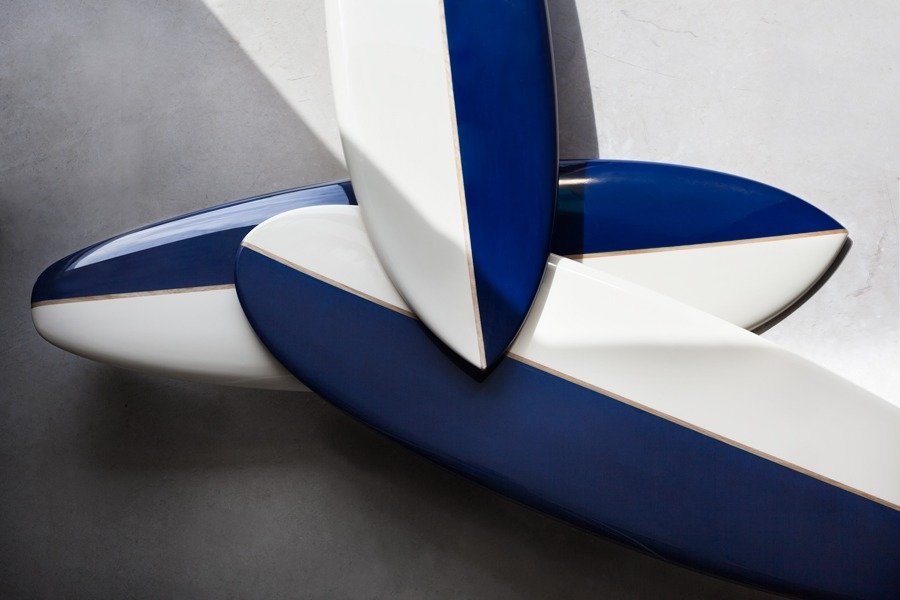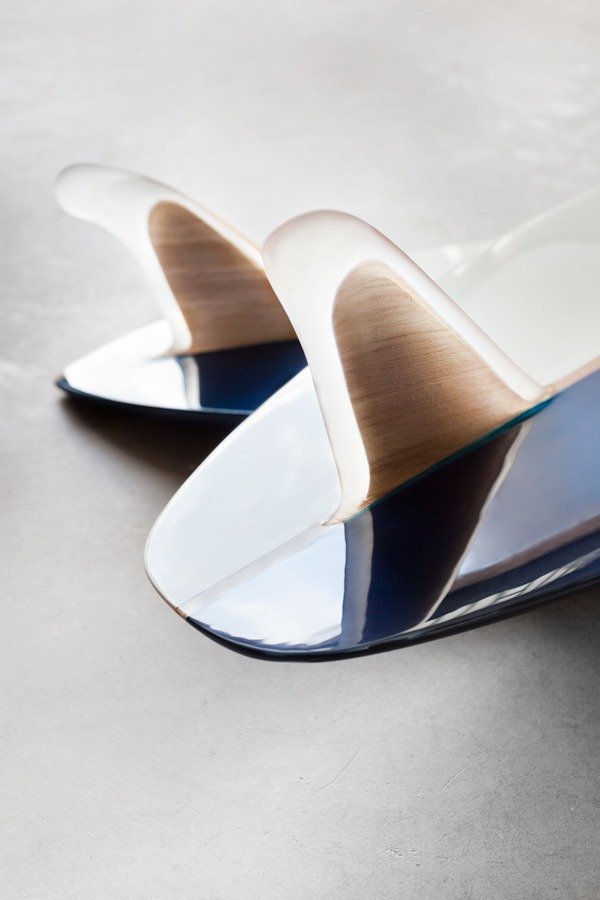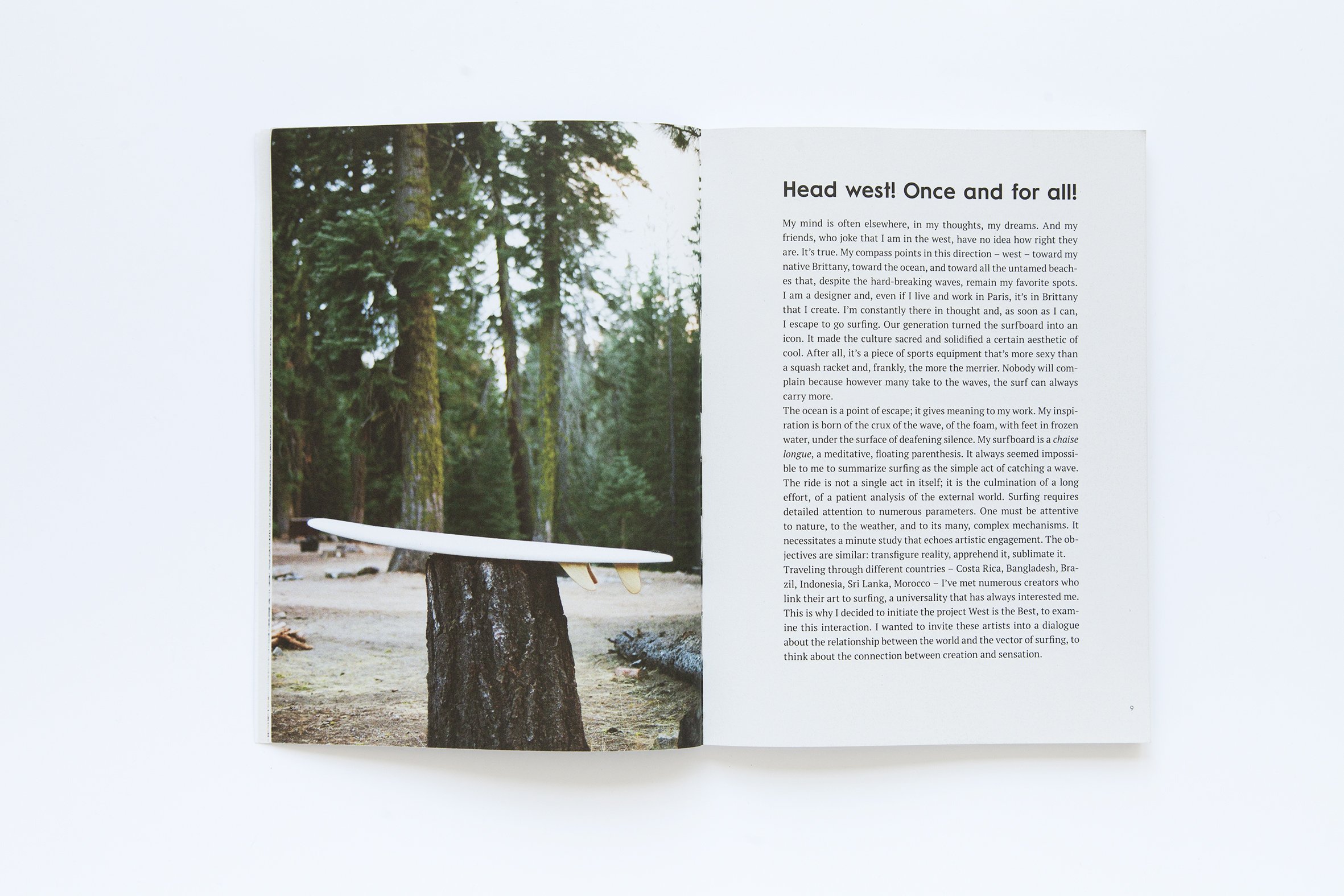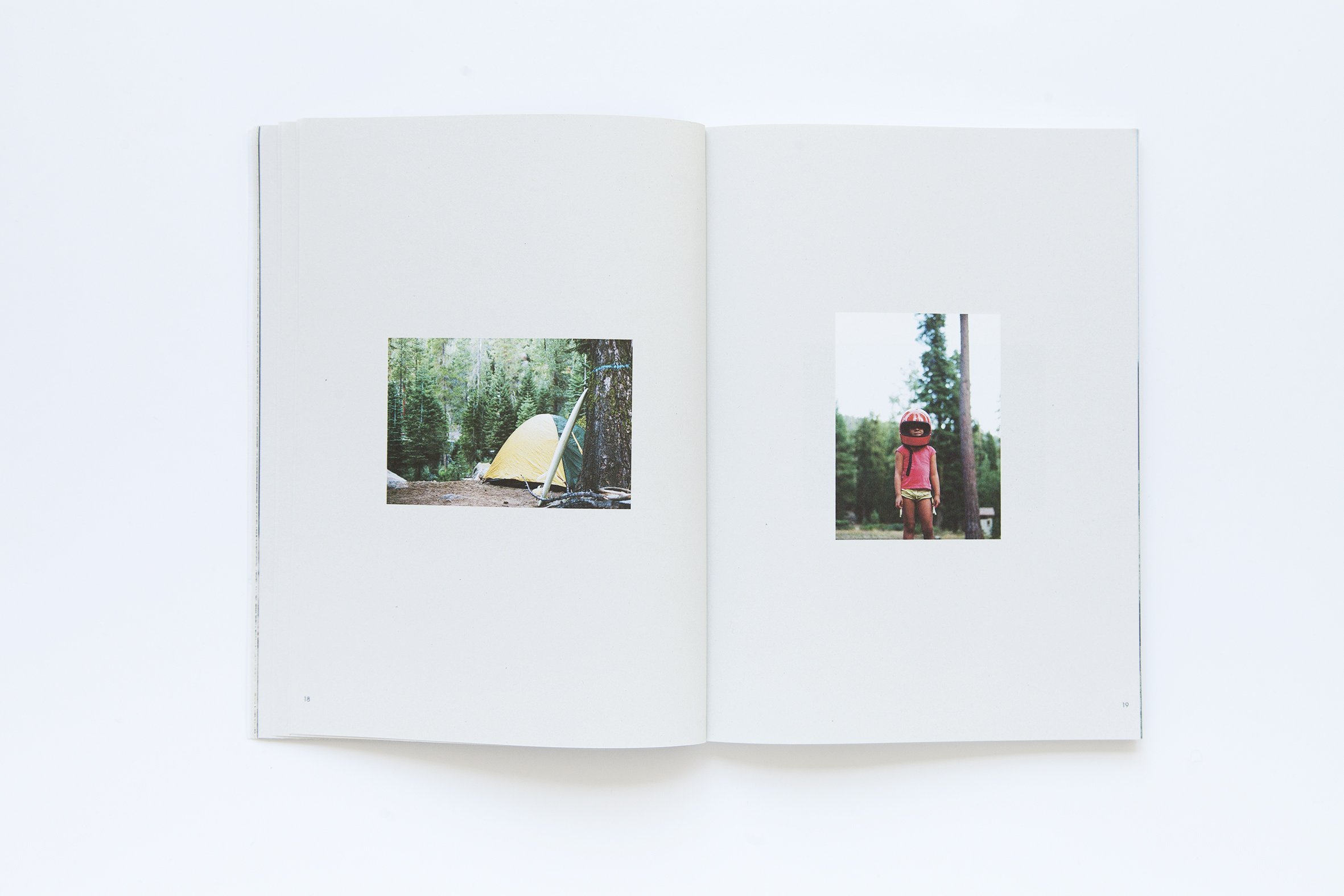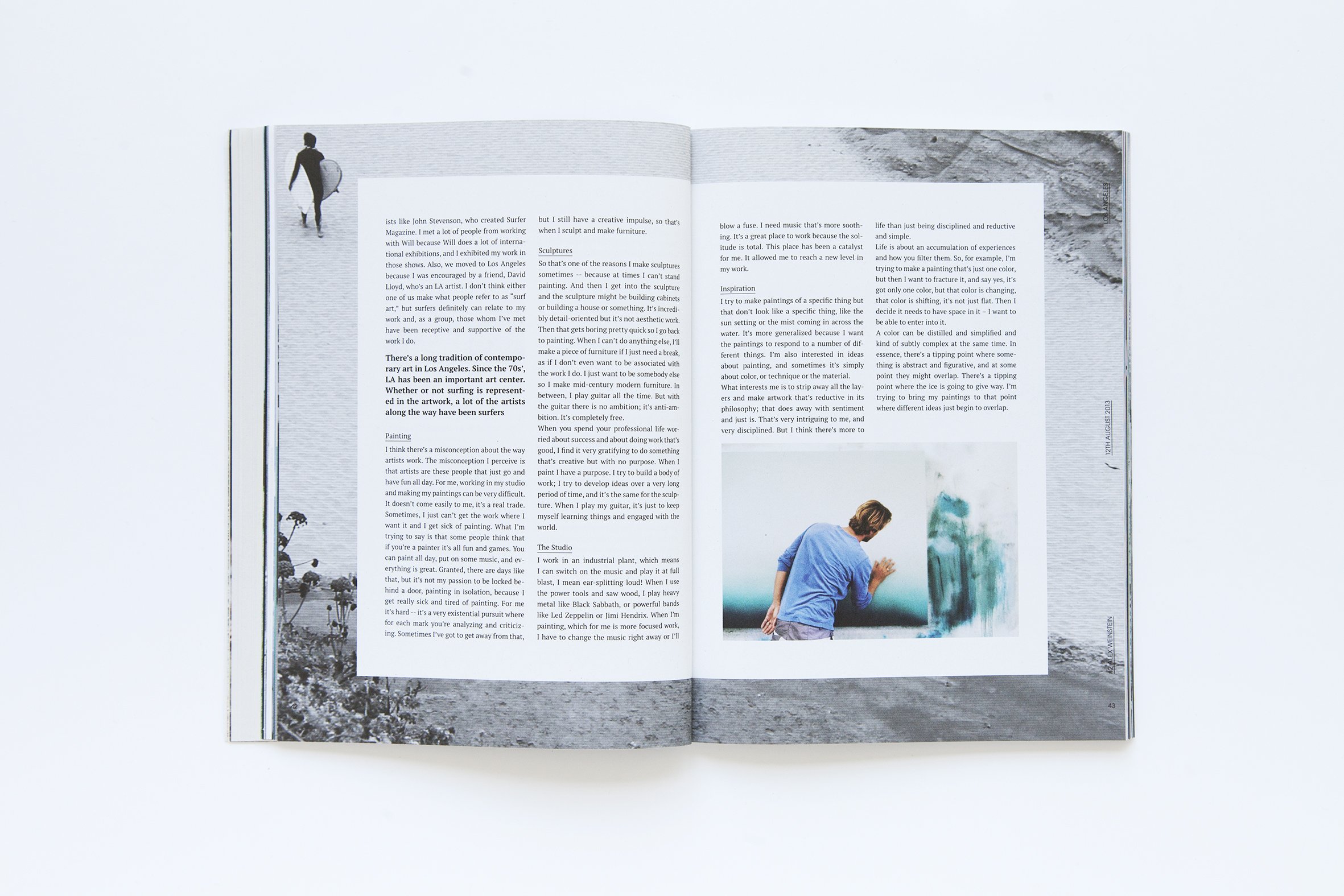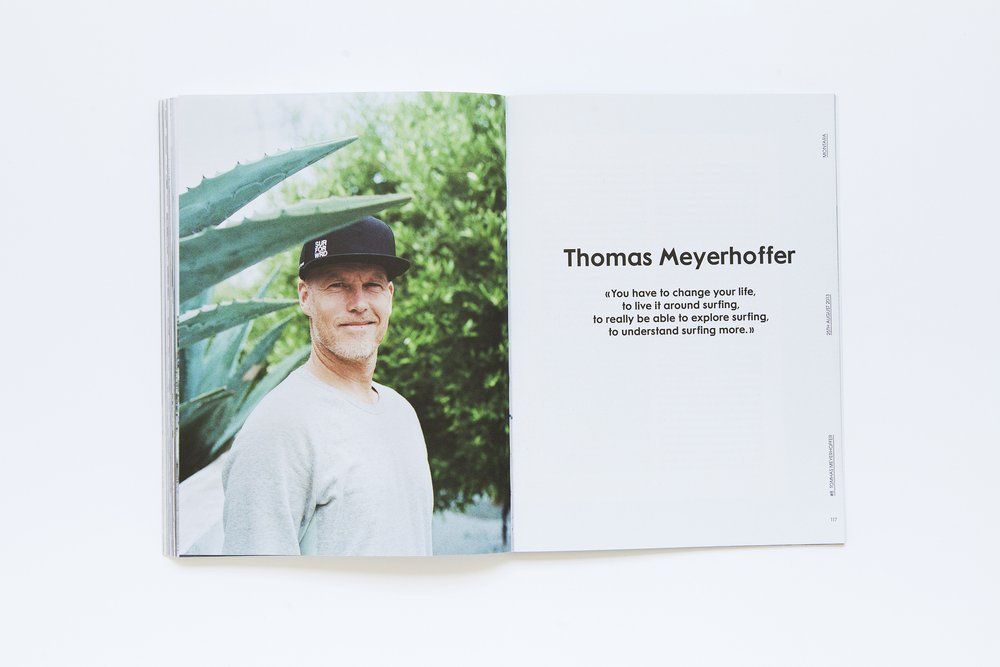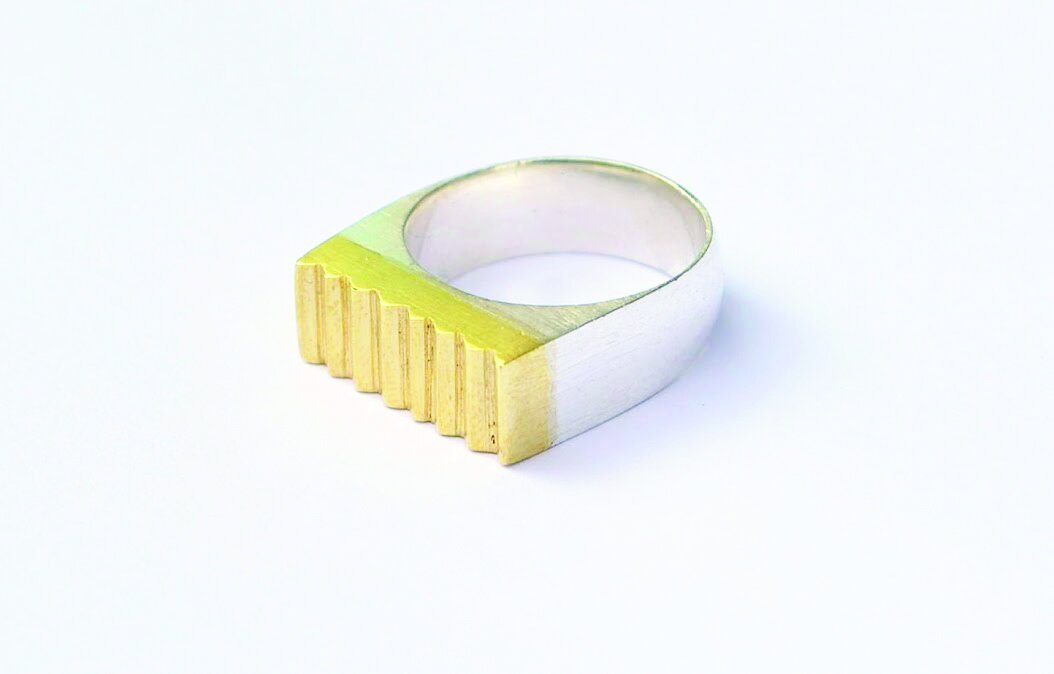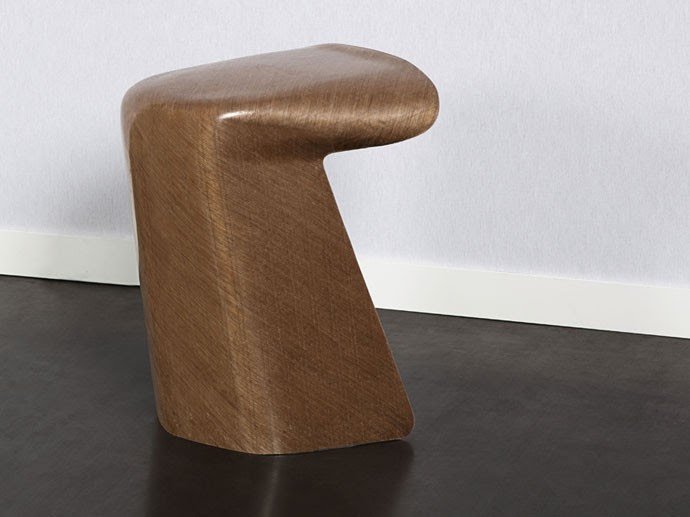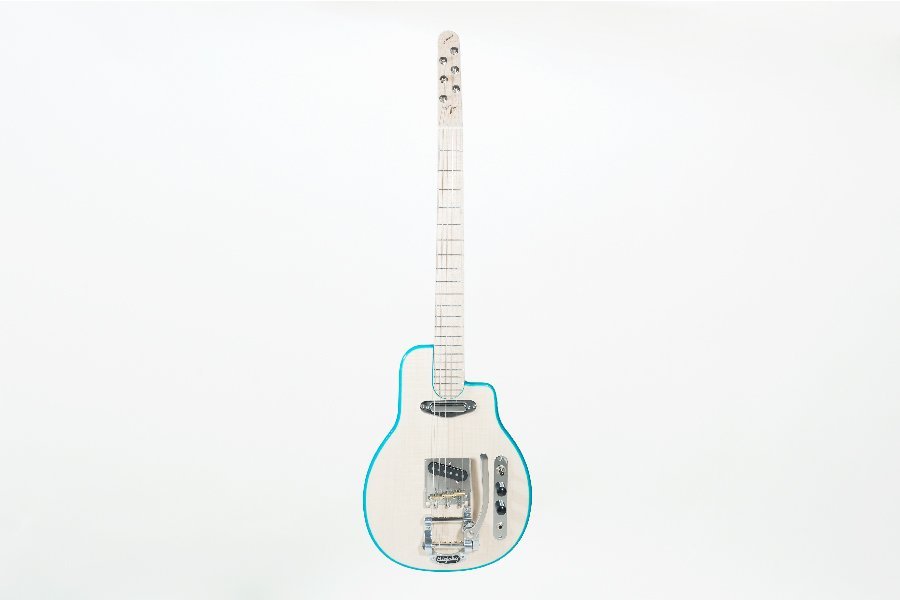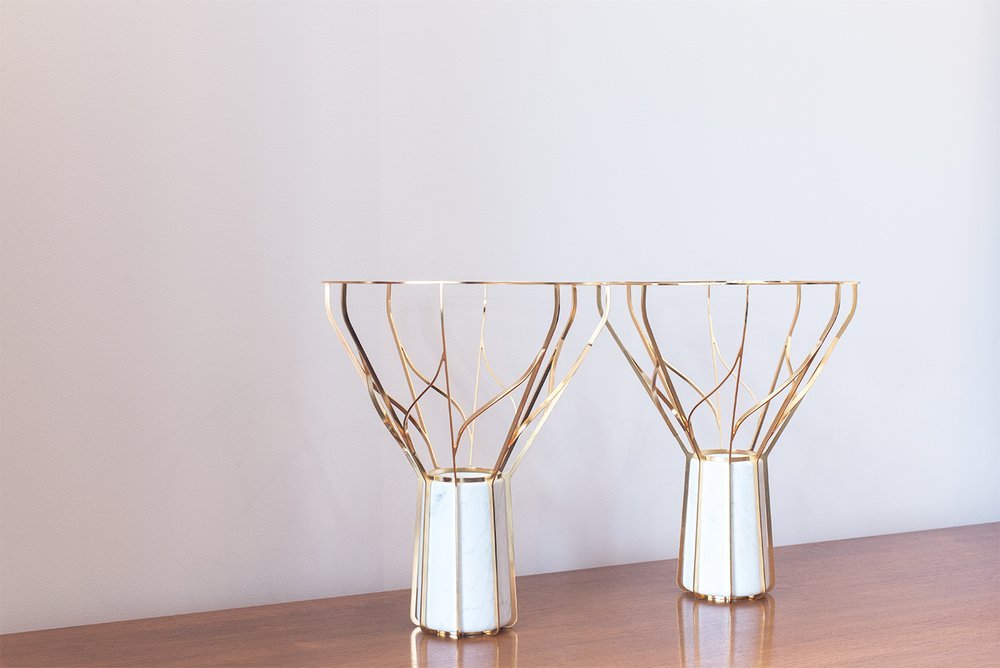Joran Briand On His Love For Surf And Wanderlust And How It Fuels His Creative Fire
As part of our ongoing interview segments, in which we profile noteworthy designers and creatives who are making an impact in the world of art, fashion, and culture, I couldn’t think of a better person to feature than Joran Briand – a multidisciplinary artist who draws his inspiration from his love of surf and his appreciation of the sea.
A renowned craftsman, Briand has the unique ability to perfectly manifest his creative vision through various art forms and for Joran, it is the ever-moving and changing ocean that brings him the inspiration to do so. Seen in his work, Joran displays the depths of his creative talent, but more importantly, he proves that regardless of the medium, he never fails to bring a new, unique, and captivating perspective to the world in which we live.
So, whether it be his Candy Guitar, his furniture designers, his lighting fixtures, or his creative direction that helped design the imagery for the French surf brand, Cuisse de Grenouille, Briand is an artist that refuses to settle in his comfort zone and always pushes the boundaries of his imagination.
Joran sat down with us to discuss his love for surfing, the sea, and travel and his relentlessness to fulfill his wildest dreams. Read on the see the full interview:
The Tidalist: Can you tell us a bit about your background? Where you grew up and your artistic influences?
JB: I grew up on the France west coast in Brittany at Vannes City, really close to the sea. I spend my whole holiday and week ends on the Arz island or Quiberon. The Arz island was a place of liberty where we could fish and build new systems of fishing rods or lockers of fishing. Quieron had a different meaning for me, is my rock, it s the place where I surf with my friends. It’s stiil the place where I just relax myself.
I started to be creative since I was really young. I was 10 years old when I started to paint and did my first sculpture. That’s how I discover new materials, playing with plaster or resin. I feel lucky to have open-minded parents, who cares about creation and doing stuff with your own hands, so they let me move into the garden or the porch in order to achieve my first creations. Little by little, those installations grew as I grew up, whether it be as a skateboarding design or a springboard installation. I could spend afternoons or weekends to make those projects come true. As a child, I always considered the world as my creative playground. The use of a skateboard, the discovery of a new material, or new tools of any kind was a pretext to express myself and at the end, transfiguring the reality.
At 18 years old I left my hometown of Brittany to study art at the “Art Decoratif” school of Paris, it was a great experience. I decided to be a designer, because it was a choice of liberty. Design is all around, design is everything. The most interesting thing is that it’s a general discipline. I love to work in different scales, subjects and environments.
TT: As a designer and a creative visionary you pursue many creative projects, from furniture design to graphic design… What do you enjoy most about working on a diverse set of projects?
JB: As a designer what interests me is to tell stories. The story can be in a research process. In the understanding of material. In the encounter of a craftsman, an industry, a place, a building … I just try to highlight these stories. I see my job as being a “éclaireur” an explorer. I have no favourite field. I enjoy working in different environments and scales. I don’t have a favourite material or a favourite skill. I like to adapt and to learn. I like amateurism. For me the design is not only a question of functionality and aesthetic it’s more than that. Design is a field of experimentation. In this field we work with different persons, engineer, craft makers, dreamers, technicians… it is our role to sublime them and to motivate them to discover new fields to conquer. People like heartfelt stories. That’s what I try to do on my work. Working with a craftsman or manufacturer that battles to keep their savoir-faire. Working with entrepreneurs who develop new processes, new social businesses…
TT: Who are some of your creative inspirations?
JB: I find the inspiration when I’m out of the office. I always have a sketchbook in my pocket. I love to sketch when I have the time, when I’m traveling or during my days off or when I go surfing. That’s why the inspiration of the ocean is recurrent in my work… Living close to the sea gives you a unique welfare. The ocean is constantly changing, moving. The smooth, the colours or the composition are really inspiring to me.
Understand material is good inspiration, I think the material has to be listened to to be tested. I try to erode the material to get the object. I am also fascinated by the “savoir-faire”. Working with craftsmen or industrialists and understanding the way they work allow me to get their knowledge and apply it to an object or to export it to a different and unexpected field. I think that is really fascinating and inspiring.
TT: The West is the Best is your first book. What pushed you to start this project and why?
JB: My mind is often somewhere else, wandering in my thoughts, in my dreams. And my friends who tease me about it saying I’m such a west-head are not far off the mark. It is true, my compass always points in that direction —westward— toward Brittany, where I was born, towards the ocean, with those wild beaches, still my favourite spots even though the waves there are often messy. I am a designer and, despite working in Paris, it is in Brittany that I truly create. I’m always there in my thoughts, and every occasion I get I run away there for a surfing session.
Our times made an icon of the surfboard. Its culture has been sacralized, becoming a certain aesthetic of cool. After all, as sports equipments go, a surfboard is way sexier than a squash racket, and it is all for the best if the joy of surfing is manifest to most people. Who would argue with that? But let’s not forget that to many people, me included, surfing brings much more than that. The ocean is a vanishing point; it brings depth to my work. More often than not, my inspiration comes to life at the base of the waves, in the foam, feet in icy water, sliding on the surface of the deafening silence… My surfboard is a deckchair, a floating interlude conducive to meditation.
I never believed you could reduce surfing to the mere act of riding a wave. The ride is not a stand-alone thing; it’s the end result of a long process, of a patient analysis of your surroundings. Practicing surfing calls for very precise attention to many parameters. You must be able to listen to nature, to the weather and its complex mechanisms, in a focused involvement reminiscent of artistic commitment. The aims are much the same: transfiguring reality, encapsulating it, refining it…
Having traveled to various countries —Costa Rica, Bangladesh, Brazil, Indonesia, Sri Lanka, Morocco…— I met many creative people linking their art to the practice of surfing. This common trait always fascinated me. That is the reason I started the West is Best project and conducted interviews focusing on that interaction. I wanted to create a dialogue about the particular relationship to the world channeled by surfing, to think about the connection between creation and sensation.
What if “slipping between the folds of the wave”, “being welcomed into the flow rather than forcing your way in”, could be the seed for a philosophy of life?
What if the practice of surfing made us realize that we really are living in an environment that is also alive?
What if the confrontation with the titanic power of the ocean could initiate a balanced relationship with nature?
What if ocean, surf, beach, skate, California were more than just clichés?
The starting point for the project had to be California because its philosophy is a testimony to the fusion between culture and creative environment. All I had to do was to go there. So, on August 7th, I boarded a plane at Charles de Gaulle airport heading for San Diego. A couple of days later I was joined by my friend Marie Doiteau, surfer and community manager, and we started our road trip with a spell at Julie Goldstein’s in Cardiff-by-the-Sea, where the illustrator with a passion for the sea starts every day with a session in the waves. Then, we met up with artist Alex Weinstein in Gardena, and legendary designer John van Hamersveld in his endless summer of Palos Verdes; we saw Sean Knibb’s gardens and brutalist furniture in Venice, enjoyed the hijinks of image-maker and Eagle Rock beach lover Brian Rea; we were impressed by Tom Stewart’s business cool, amazed by Ryan Tatar’s instant photographs of San Francisco and by Thomas Meyerhoffer’s designs. They shared with us their visions of the ocean, of their relationship to the elements, and what the immersion into and contact with the waves bring every day to their creations.
Every year this magazine will capture and reap the lifestyle and thinking of a country, of a creative community to listen to their feelings and their balances. Through his project, we will show another way of living and creating a connection with the ocean. For the next issue, West is the Best n°2, will cross the Atlantic sea for France to meet frustrated surfers based in Paris, forced to move to the capital to accomplish their artistic career. I want to know: How they do to find a balance between sea and city? – How do they do to find the wave? – How do they do on journey from the studio to the coast?
The goal is to spend time with them, surfing and discussing their work, their inspiration, and their desire…
TT: Is there an event, trip, or project that you are most excited about in the future?
JB: I would love to have a working space front of a good wave, connected to urban artistic frenzy. I know it could seem utopian, but I bet on it, considering Internet and the new way of transport. I really think it s doable. It’s a question of organization. I would like to develop a working space with people who share my lifestyle. A bit like Deus but in a more artistic collaboration way. I still want to travel, mobility is important in my work. To be able to keep working with people who are thinking about new ways of fabrication, consumption, communication, you have to go meet them, tease them and to do that, you have to be available to work on those new creative fields.
Meanwhile this new studio fronts a sea view I will travel each year in a new country to met people like me. I will continue to make these books (West is the best) it gives me fresh air to my studio and I. The next destination will be Brazil for August 2016.
A very special thank you to Joran Briand – a creative visionary who never stops pushing our sense of imagination and our eye for design. Be sure to head HERE to check out Briand’s website and to stay in the know about this unique and talented craftsman and artist.
Photo credits:
Main photo portrait: Cyrille Weiner
Surfboard and the guitar: Claire Payen
Toul stool: Marie Flores



